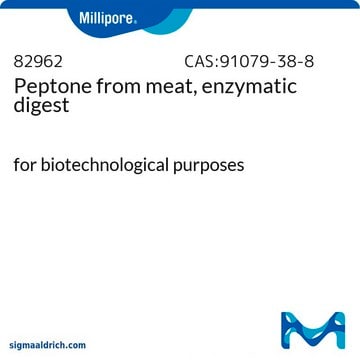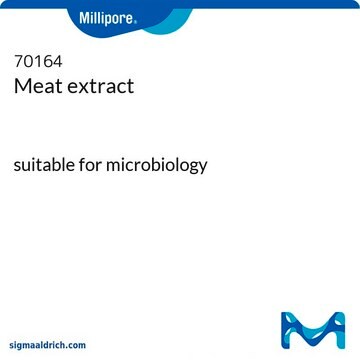P5905
Peptone from animal tissue
from meat, BioReagent, suitable for cell culture, suitable for plant cell culture
Synonym(s):
Peptone from animal source
About This Item
Recommended Products
biological source
animal (meat)
product line
BioReagent
form
powder
technique(s)
cell culture | mammalian: suitable
cell culture | plant: suitable
solubility
H2O: 50 mg/mL
shipped in
ambient
storage temp.
room temp
InChI
1S/C13H24O4/c1-6-13(3,7-2)9-8-10(11(14)16-4)12(15)17-5/h10H,6-9H2,1-5H3
InChI key
AIUDWMLXCFRVDR-UHFFFAOYSA-N
Looking for similar products? Visit Product Comparison Guide
Related Categories
General description
Application
Other Notes
Storage Class Code
11 - Combustible Solids
WGK
WGK 3
Flash Point(F)
Not applicable
Flash Point(C)
Not applicable
Personal Protective Equipment
Certificates of Analysis (COA)
Search for Certificates of Analysis (COA) by entering the products Lot/Batch Number. Lot and Batch Numbers can be found on a product’s label following the words ‘Lot’ or ‘Batch’.
Already Own This Product?
Find documentation for the products that you have recently purchased in the Document Library.
Customers Also Viewed
Our team of scientists has experience in all areas of research including Life Science, Material Science, Chemical Synthesis, Chromatography, Analytical and many others.
Contact Technical Service












